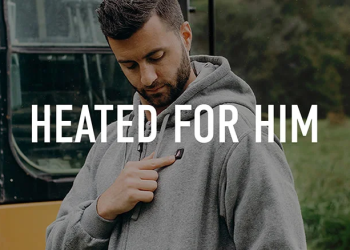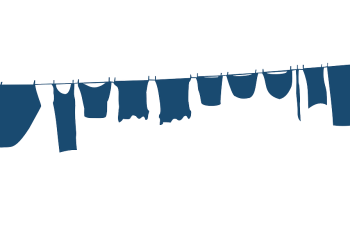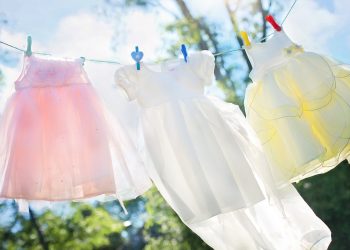As the fashion industry evolves, there is a growing emphasis on ethical practices that prioritize sustainability, transparency, and the well-being of workers. This shift reflects a broader demand for accountability in the face of environmental challenges and human rights concerns. The future of fashion lies in adopting ethical practices that redefine how clothing is designed, produced, and consumed. Here’s an exploration of the key aspects driving this transformation.
Transparency in the Supply Chain
Transparency is at the core of ethical fashion, allowing consumers to make informed decisions:
- Traceable Materials:
- Brands are increasingly providing information about the origins of their materials, ensuring they are sourced sustainably.
- Certifications like GOTS (Global Organic Textile Standard) and Fair Trade help verify ethical sourcing.
- Factory Conditions:
- Companies are disclosing details about their factories, including worker conditions, wages, and safety standards.
- Transparent reporting fosters trust and accountability.
- Technology in Transparency:
- Blockchain technology is being used to track every step of the supply chain, ensuring authenticity and ethical compliance.
By prioritizing transparency, brands empower consumers to support businesses that align with their values.
Sustainable Materials and Practices
The fashion industry is adopting innovative materials and methods to reduce its environmental impact:
- Eco-Friendly Fabrics:
- Organic cotton, Tencel, hemp, and recycled polyester are becoming standard in ethical collections.
- Alternative materials like Piñatex (pineapple leather) and mushroom leather are gaining popularity.
- Circular Fashion:
- Emphasizing reuse, recycling, and upcycling to extend the life of garments.
- Initiatives like clothing rental services and take-back programs encourage circularity.
- Water and Energy Conservation:
- Innovations in dyeing processes, such as waterless dyeing, significantly reduce water usage.
- Renewable energy sources are being integrated into manufacturing facilities.
Sustainable practices demonstrate the industry’s commitment to reducing its ecological footprint.
Fair Labor Practices
Ethical fashion prioritizes the welfare of workers throughout the supply chain:
- Living Wages:
- Ensuring workers are paid fairly for their labor, meeting or exceeding living wage standards.
- Safe Working Conditions:
- Addressing workplace hazards and ensuring compliance with safety regulations.
- Empowering Communities:
- Supporting local artisans and traditional craftsmanship through fair trade initiatives.
- Combatting Exploitation:
- Actively working to eliminate child labor and modern slavery in the fashion industry.
Fair labor practices create a more equitable and humane industry.
Reducing Waste and Overproduction
The future of fashion is moving away from the “fast fashion” model of overproduction and waste:
- Made-to-Order Systems:
- Brands are adopting on-demand production to reduce excess inventory.
- Zero-Waste Design:
- Patterns are created to maximize fabric usage and minimize scraps.
- Upcycling and Repurposing:
- Transforming waste materials into new products, reducing the need for virgin resources.
These strategies help address the staggering waste problem associated with traditional fashion production.
Consumer Awareness and Advocacy
Consumers play a vital role in driving ethical practices by demanding transparency and accountability:
- Educated Choices:
- Increasing awareness about the environmental and social impact of fast fashion is leading to more mindful consumption.
- Supporting Ethical Brands:
- Consumers are prioritizing companies that align with their values, fostering competition for ethical standards.
- Social Media Influence:
- Platforms like Instagram and TikTok are amplifying the voices of ethical fashion advocates, spreading awareness globally.
Informed consumers are shaping the future of the industry by choosing to support responsible practices.
Role of Technology and Innovation
Technology is revolutionizing how ethical practices are implemented:
- 3D Printing:
- Reduces waste by producing items on-demand with precision.
- AI and Data Analytics:
- Predicts consumer demand, reducing overproduction.
- Digital Fashion:
- Virtual clothing for social media and gaming reduces the need for physical production.
Innovative technologies are making sustainable and ethical fashion more achievable than ever.
Policy and Regulation
Governments and international organizations are stepping in to enforce ethical standards:
- Legislation:
- Laws like the Modern Slavery Act in the UK require companies to disclose efforts to combat forced labor.
- Global Standards:
- Initiatives like the United Nations’ Sustainable Development Goals (SDGs) guide the fashion industry toward ethical practices.
- Incentives for Sustainability:
- Tax breaks and subsidies for brands adopting eco-friendly practices encourage widespread change.
Regulatory frameworks ensure accountability and create a level playing field for ethical practices.
Challenges to Ethical Fashion
Despite progress, there are obstacles to achieving a fully ethical fashion industry:
- Higher Costs:
- Ethical materials and practices often come with increased production costs, leading to higher prices for consumers.
- Scalability:
- Smaller brands may struggle to implement ethical practices on a large scale.
- Greenwashing:
- Some companies falsely market themselves as sustainable, misleading consumers.
Overcoming these challenges requires collaboration between brands, consumers, and policymakers.
The Path Forward
The future of fashion lies in a collective effort to embrace ethical practices:
- Consumer Responsibility:
- Supporting ethical brands and making mindful purchasing decisions.
- Industry Collaboration:
- Sharing resources, technologies, and best practices to accelerate change.
- Education and Advocacy:
- Raising awareness about the importance of ethical fashion through education and storytelling.
By prioritizing ethical practices, the fashion industry can redefine itself as a force for good, balancing style with sustainability and equity.








